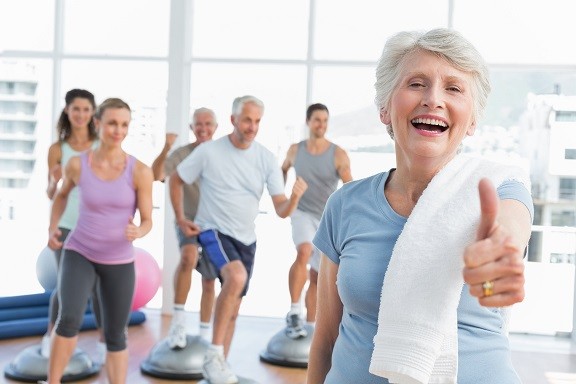One way in which you can fight ageing and age-related health disorders is through a customised exercise programme and anti ageing diet plan. Exercise can help reduce harmful inflammation throughout the body, cleanse toxins, enhance bone density and avoid injury in the elderly.
It also helps to improve and reverse age-related health conditions (e.g., heart disease, obesity and diabetes) and promote cellular longevity.
Exercise has been shown to reduce inflammation in the body through weight loss, improve immune function, increase fat metabolism and enhance cellular function.
Moreover, exercise stimulates lymphatic drainage, which aids in the removal of harmful toxins from the body.
Such effects help alleviate and reverse many chronic conditions associated with ageing, including diabetes, obesity and cardiovascular problems by reducing body fat and insulin sensitivity.
Finally, by enhancing cellular performance and repair, our overall life-span can also be enhanced by exercise.
How and why does anti-ageing exercise work?
Exercise delays and reverses many age-related diseases by decreasing the overall level of inflammation in the body, enhancing bone density, decreasing the risk of developing age-related diseases and can reverse the symptoms several age-related health conditions (e.g., diabetes and heart disease)13.
When should an anti-ageing exercise regime start?
Ideally, an exercise regime should begin as soon as possible.
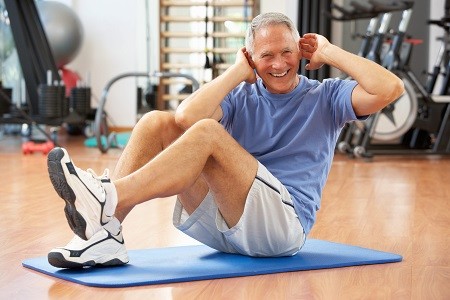
However, it is recommended that individuals with health concerns (e.g., heart conditions or injuries), pregnant women, or those who are taking certain medications consult with a doctor regarding the intensity and frequency of an exercise program. In addition, for those just starting out, caution is advised regarding the intensity at which you begin.
It is always best to ease into a new exercise regime and progressively increase the intensity to avoid injury, muscle inflammation and other health concerns.
Do you have an age, health or performance related question?
Send your question now by clicking on this link, and get it answered today.
What lifestyle habits related to exercise are accelerating ageing and what are the precise accelerating ageing mechanisms caused by these habits?
Lifestyle habits that accelerate the ageing process include:
1) A lack of exercise combined with a poor diet, which will increase the risk of developing obesity and obesity-related illnesses (e.g., heart disease and diabetes);
2) Exercise to the point of injury, which can lead to joint inflammation and lengthy periods without exercise;
3) Exercise without self-care (e.g., sleep, massages, rest days) can lead to fatigue and compromise the immune response, leading to illness and injury; and
4) Excessive exercise can result in injury to the muscles, tendons or limbs, resulting in increased inflammation, adrenal fatigue and impaired immune function 1-13.
How you can begin your optimum anti-ageing exercise?
The optimum anti-ageing exercise regime is one that you can adhere to for the long-term.
Exercise must be an activity that can be inserted into your schedule each day, similar to an appointment in order for it to become a habit and part of your lifestyle.
To ensure that this habit is successfully formed, you should choose a form of exercise that you find enjoyable, that can be easily scheduled, and can be done\each day so that it becomes routine.
You may also consider where you like to exercise.
For example, do you prefer to exercise at home, a gym or outside?
Why should you avoid poor quality cosmetics, pollution and heavy metals?
Poor quality cosmetics, pollution and heavy metals should be avoided because they can cause cellular damage and accelerate the ageing process.
When cells become damaged, especially due to harmful cosmetics and exposure to other pollutants, the skin begins to lose its elasticity, organ function decreases and damaged cells trigger an inflammatory response, which creates a swollen appearance, especially in the face.

Cellular damage that triggers inflammation in the lungs and liver can lead to cancer, especially damage caused by the inhalation of pollutants in the environment11,13.
What is the impact of harmful chemicals
Harmful chemicals cause hormonal disruptions in the body, including those found in non-organic foods and many animal products.
Since animals consume plants and other foods that have been exposed to pesticides or growth hormones, consuming these foods will negatively affect the endocrine system in humans.
Many of these chemicals interfere with the oestrogen pathway, and is one major cause of infertility.
Exercise can help detoxify the body from these chemicals through promoting lymphatic drainage8,11,13.
When is the best time of day to exercise?
Everyone is different and has a different schedule.
While exercising first thing in the morning has been shown to increase metabolic function throughout the day, as well as deplete glycogen stores (increasing fat metabolism versus glucose metabolism), the ideal time to exercise is highly individualistic.
Generally, the best time to exercise is one that works with your schedule and can be achieved consistently.
Should you exercise when you are sick?
In general, listen to your body.
Since exercise puts stress on the body, it will compromise the ability of your immune system to fight an infection and ultimately make yourself sicker.
Therefore, if you are ill, focus on recovery by resting and eating nutrient-dense foods (e.g., ginger, vegetable soup and other plant-based supplements).
You can resume your exercise routine when you are feeling better.
Would you like to reverse your clock, to feel fit and at your best?
Contact Jazz Alessi, an Elite Personal Trainer in North London for a committment free consultation.
8 Precise Anti-Ageing Mechanisms of Exercise to Use and Stop the Clock
There are multiple benefits of exercise, and there are several mechanisms by which exercising can be used to avoid the development of age-related health conditions and reverse the signs of aging.
Moreover, exercise can be used to reduce the risk of developing cancer and prolong the human lifespan. In general, exercise functions by reducing the overall level of inflammation in the body13.
Inflammation has been linked to the development of cancer, heart disease, type 2 diabetes, and even cognitive decline (e.g., dementia) in the elderly.
Inflammation in inactive individuals is typically caused by excess fat cells, which secrete inflammatory signals.
It can also be caused by immune-activating chemicals which have not been expelled by the body through the lymphatic system.
By supressing the baseline inflammatory response, these age-related diseases can be alleviated or reversed.
Exercise helps decrease this excess inflammation by reducing the amount of fat tissue in the body, as well as increasing circulation, metabolic function and overall cellular function15.
This decreased inflammation restores proper immune function and surveillance, providing enhanced protection against potential infections and cancerous cells.
Below is a list of some of the mechanisms by which exercise can prevent ageing via immune mechanisms.
1. Exercise in nature to boost immunity
It has been shown that the benefits of exercise can be enhanced by exercising outdoors, especially in a natural setting (e.g., forest or field) away from traffic and the city.
This is because plants produce oxygen and many other beneficial chemicals (e.g., essential oils) which we are exposed to when we exercise in nature14.
In addition, the natural ground reduces the stress of impact on the joints and being away from sources of pollution decreases the exposure to harmful chemicals that are toxic to the body.

All of these factors enhance immune function.
2. Exercise decreases systemic inflammation
Several studies have shown that exercise decreases the overall level of inflammation in the body3.
This is achieved through several mechanisms.
First, exercise is associated with a decrease in overall body fat, thus decreasing obesity-associated inflammation produced by excess adipose (fat) tissue15.
In addition, exercise has been shown to downregulate major inflammatory modules in the body by regulating gene expression.
Exercise also helps cells become more resistant to oxidative stress, reducing cellular damage11,13.
Decreased systemic inflammation enhances immune function in response to pathogens and other threats.
3. Exercise alleviates symptoms of mental illness
There is mounting evidence to support the use of exercise to reduce symptoms associated with depression, bipolar disorder, anxiety and several other mental health conditions5,2.
This is achieved by enhancing mitochondrial (source of cellular energy) function, regulating adrenal (hormone) imbalances, the secretion of endorphins and decreasing inflammation in the brain.
Thus, it has become quite popular for mental health professionals to prescribe regular exercise as a form of treatment for many patients suffering from mental health conditions.
The primary mechanism by which exercise mediates such mental health benefits is through the production of endorphins, which activate the opioid receptors and alleviate symptoms of anxiety and depression.4,9
In addition, exercise also induces BDNF, which stimulates neurological repair mechanisms and provides protection against DNA damage, and the development of age-related neurological conditions (e.g., dementia)10.
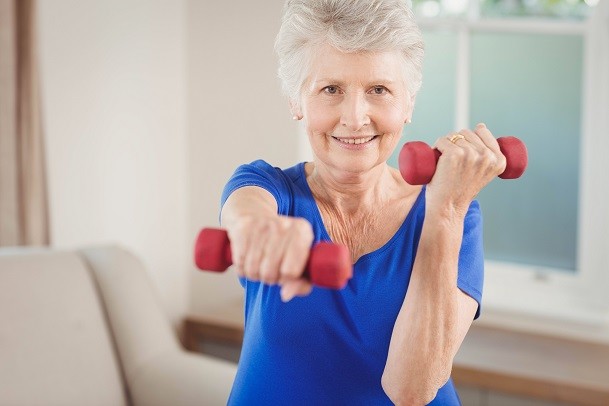
Would you like to reverse the clock, to feel fit and at your best?
Contact us now by clicking on this link for a committment free consultation today.
4. Exercise decreases the risk of dementia
Increased research supports the use of exercise to decrease the risk of developing age-related conditions such as dementia and Alzheimer’s disease5, 10.
Since both obesity and diabetes are risk factors for dementia, exercise can help reduce the risk by lowering the amount of body fat and reducing insulin sensitivity.
Moreover, exercise decreases the inflammatory response in the brain, which promotes neurogenesis, restores cognitive pathways and enhances memory.
5. Exercise increases lymphatic flow
The lymphatic system uses skeletal muscles to pump lymph throughout the body.
The lymph carries immune cells and cellular waste products throughout the body and connects with the general circulation for elimination or distribution to a specific tissue3.
Since exercise stimulates the contraction of the skeletal muscles, the rate at which the lymph circulates throughout the body is increased, thereby improving immune function and the elimination of toxins and waste products from the body.
6. Exercise decreases obesity and obesity-related diseases
One of the well-known benefits of exercise is weight-loss.
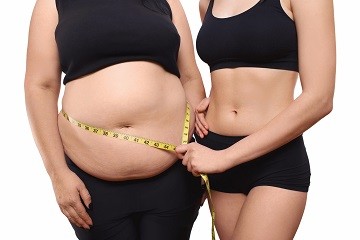
This is achieved by increasing the metabolic rate as well as fat metabolism.
When combined with a healthy diet plan, exercise can be used to achieve a healthy weight, and alleviate insulin sensitivity, cardiovascular disease and other obesity-related illnesses12.
Since most of these diseases are aggravated by increased inflammation due to excess adipose (fat) tissue, they can be addressed by reducing immune activation with exercise13.
Would you like to reverse the clock, to feel fit and at your best?
Contact us now by clicking on this link for a committment free consultation today.
7. Exercise is associated with increased longevity
There are multiple studies both in animal models and humans which demonstrate that exercise is associated with a longer lifespan13,15.
Apart from reducing the risk of developing age-related diseases, exercise increases longevity by enhancing cellular performance due to decreased inflammation, increased blood flow (oxygenation) and reducing oxidative damage. Increasing cellular health results in fewer cellular divisions, DNA damage and cellular stress signals.
Overall cellular health throughout the body prolongs the lifespan and a youthful appearance11.
8. Exercise lowers the risk of developing cancer
Exercise has been found to be associated with a decreased risk of cancer development in several studies7.
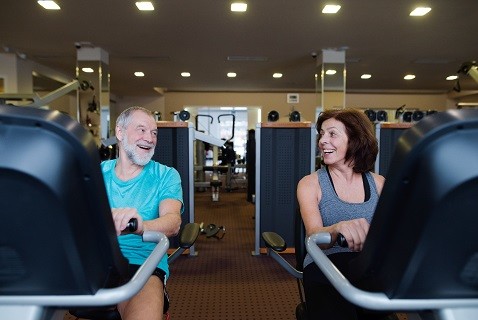
This is achieved by increasing lymphatic circulation throughout the body, allowing immune cells to detect and destroy cancerous cells before they become problematic.
In addition, by reducing cellular damage, cells do not need to replicate as frequently, thus reducing the risk of genetic mutations that lead to the transformation of cancer cells3.
About Elite Personal Trainer, Jazz Alessi – Your Anti Ageing London Specialist
Adjusting to an anti-ageing exercise regime may be intimidating as it may be unclear as to which exercises to focus on, how to personalise everything based on your sensitivities, injuries, challenges and goals, establishing a routine working for you and how often to exercise.
One method of making this process easier is to follow a finely customised personal training package personally designed for your body to helping you to successfully achieve your anti ageing goals.
As a leading exercise specialist with extensive experience in anti-ageing exercise packages and helping clients achieve their goals, Jazz Alessi, the best Personal Trainer in London Bridge area and his team of medical doctors provides customised personal training plans based on your:
- age,
- gender,
- metabolism,
- activity levels,
- schedule,
- old or existing injuries,
- exercise and nutrition preferences
- sensitivities and allergies,
- personal challenges,
- individual body type,
- fitness level
- disease progression
- your London location,
- etc.
Would you like to reverse the clock, to feel fit and at your best?
Contact us now by clicking on this link for a committment free consultation today.
Jazz Alessi’s customised personal training plan begins with a detailed analysis that assesses each client’s current fitness level and which exercises should be integrated to stimulate maximum anti ageing effects, weight loss and reap the maximal health benefits.

Jazz Alessi will then provide a customised personal training package with appropriate intensity to avoid placing excessive stress on the body while promoting hormone regulation, reducing inflammation helping to rebalance and completely transform your body.
Any health issues specific to each client will also be considered, and Jazz Alessi will provide continued support throughout the entire process.
Did you like reading evidence based articles?
If you enjoy reading evidence based fitness, and want to learn how to transform your body through customised exercise and clinical nutrition and other proven lifestyle techniques please come back soon.
I will publish soon the 2nd part of the “Anti Ageing” series, and you will learn how my customised anti ageing personal training is increasing your energy production, helping you to achieve your weight loss goals, aids nutrients repleneshing and giving you a much youngish skin texture.
References
- Buman, Matthew P. et al. (2011). “Exercise Effects on Night-to-Night Fluctuations in Self-Rated Sleep among Older Adults with Sleep Complaints.” Journal of sleep research 20.1 Pt 1: 28–37.
- Firth, Joseph et al. (2016). “The Effects and Determinants of Exercise Participation in First-Episode Psychosis: A Qualitative Study.” BMC Psychiatry 16: 36. PMC. Web. 24 Dec. 2017.
- Gomes E.C., Florida-James G. (2016) Exercise and the Immune System. In: Esser C. (eds) Environmental Influences on the Immune System. Springer, Vienna.
- Hildebrandt et al. (2014). Exercise reinforcement, stress, and β-endorphins: An initial examination of exercise in anabolic–androgenic steroid dependence. Drug and Alcohol Dependence. 139: 86-92.
- Jeon, Yong Kyun, and Chang Ho Ha. (2017). “The Effect of Exercise Intensity on Brain Derived Neurotrophic Factor and Memory in Adolescents.” Environmental Health and Preventive Medicine 22: 27. https://www.ncbi.nlm.nih.gov/pmc/articles/PMC5664787/
- Kruger et al. (2017). Exercise training reverses inflammation and muscle wasting after tobacco smoke exposure. Am J Physiol Regul Integr Comp Physiol. Nov. 1 [Epub ahead of print].
- Liss, Michael et al. (2017). “Physical Activity Decreases Kidney Cancer Mortality.” Current Urology 10.4:193–198.
- Radak, Zsolt et al. (2013). “Oxygen Consumption and Usage During Physical Exercise: The Balance Between Oxidative Stress and ROS-Dependent Adaptive Signaling.” Antioxidants & Redox Signaling 18.10: 1208–1246.
- Schwarz and Kindermann. (1992). Changes in β-Endorphin Levels in Response to Aerobic and Anaerobic Exercise. Sports Medicine. 13(1): 25-36.
- Whiteman, Andrew et al. (2014). “Interaction between Serum BDNF and Aerobic Fitness Predicts Recognition Memory in Healthy Young Adults.” Behavioural brain research 259: 302–312.
- Yang, Jeng-Lin. (2014). BDNF and Exercise Enhance Neuronal DNA Repair by Stimulating CREB-Mediated Production of Apurinic/Apyrimidinic Endonuclease 1. NeuroMolecular Medicine. 16(1): 161-174.
- Colberg, et al. (2010). Exercise and Type 2 Diabetes: The American College of Sports Medicine and the American Diabetes Association: joint position statement. Diabetes Care, 33(12), e147–e167. http://doi.org/10.2337/dc10-9990
- Garatachea et al. (2015). Exercise Attenuates the Major Hallmarks of Aging. Rejuvenation Research, 18(1), 57–89. http://doi.org/10.1089/rej.2014.1623
- Rogerson et al. (2016). Influences of Green Outdoors versus Indoors Environmental Settings on Psychological and Social Outcomes of Controlled Exercise. International Journal of Environmental Research and Public Health, 13(4), 363. http://doi.org/10.3390/ijerph13040363
- Booth et al. (2012). Lack of exercise is a major cause of chronic diseases. Comprehensive Physiology, 2(2), 1143–1211. http://doi.org/10.1002/cphy.c110025
16. Smith, L. (2003). Overtraining, excessive exercise, and altered immunity: is this a T helper-1 versus T helper-2 lymphocyte response? Sports Med, 33(5): 347-64.
Disclaimer: This website and all its content is to be used for information purposes only. This website or any of its content or links to third parties does not diagnose, advise, treat or cure any ailments, illness or disease.
You agree to hold harmless the owner of this site for any action taken on your own without consulting your medical doctor first by using the information on the website for diagnostic, treatment, or any other related purposes. This is not medical advice. If you are suffering from any illness, disease or ailments please contact your doctor first and immediately.



